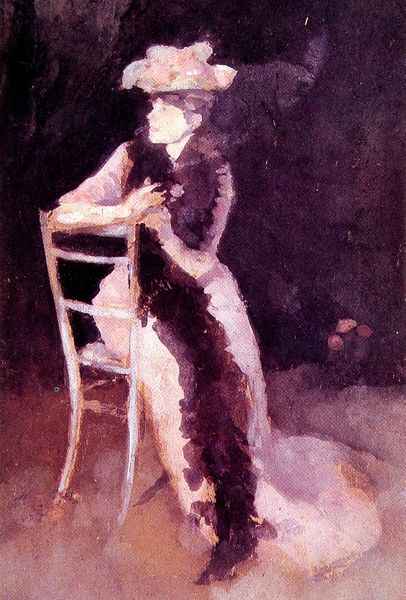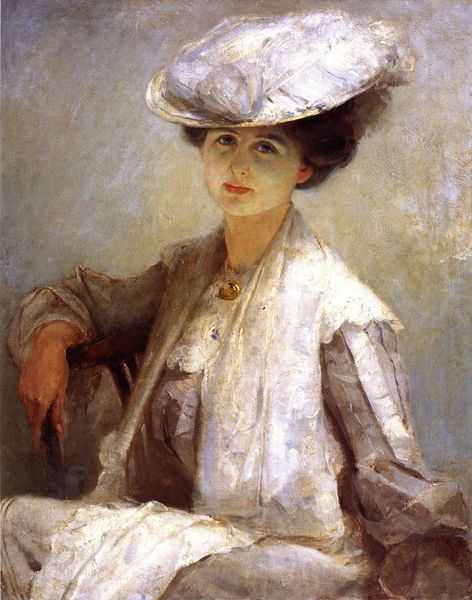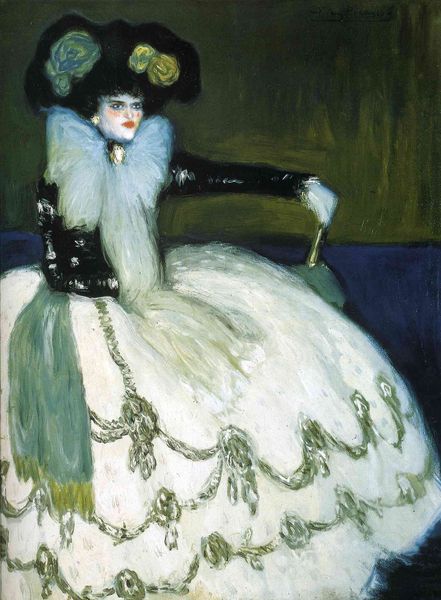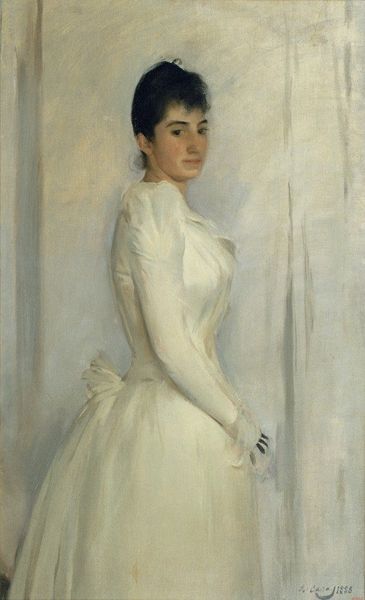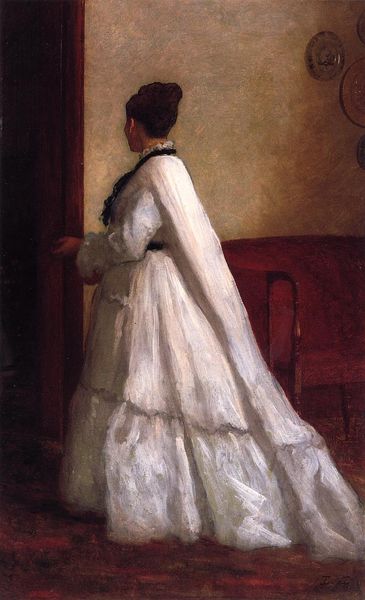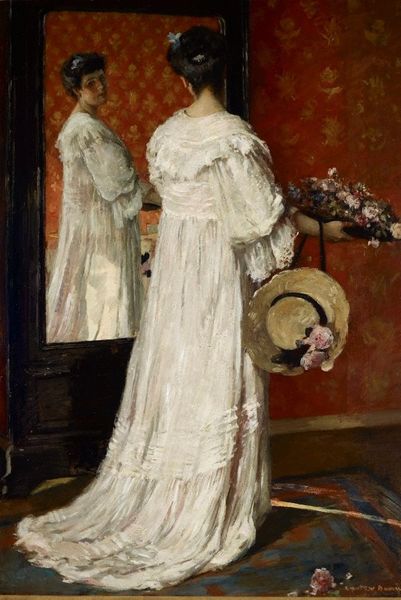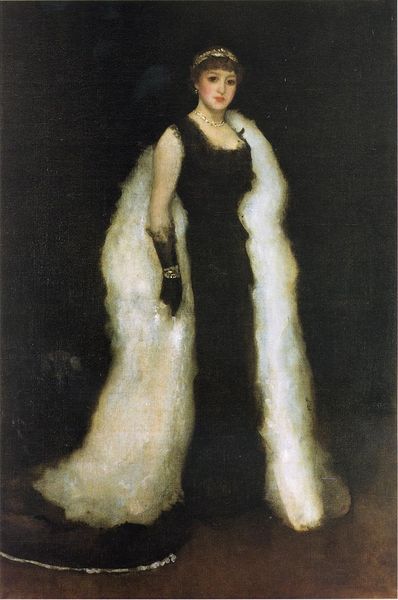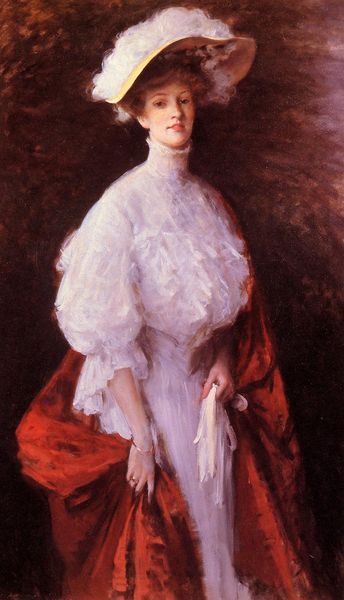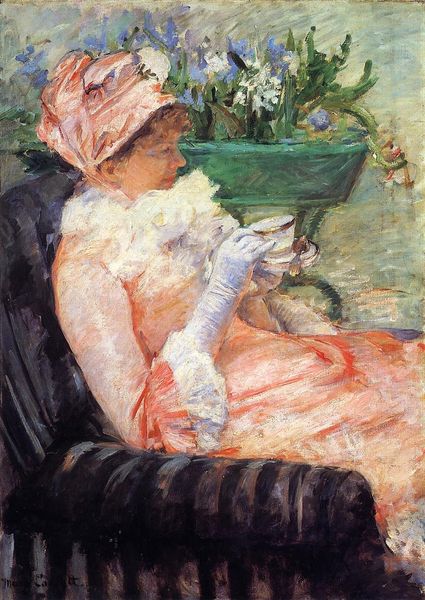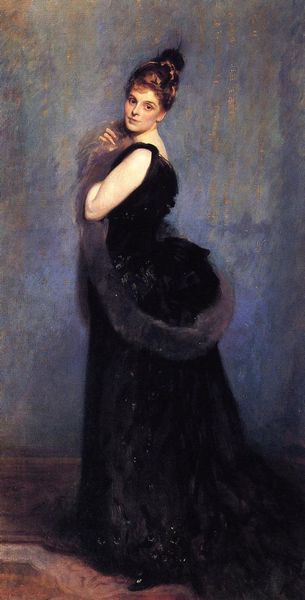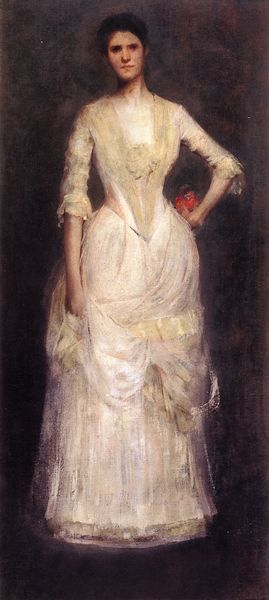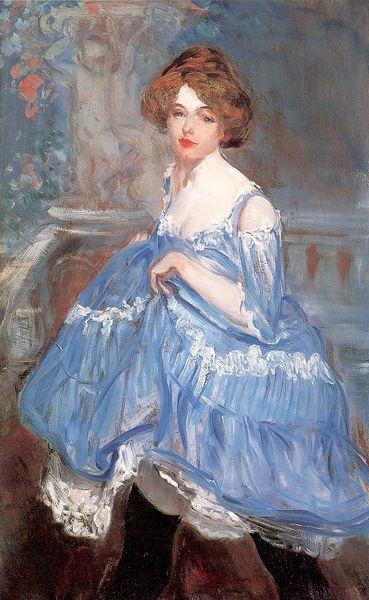
Copyright: Public domain
Editor: This is William Merritt Chase's "My Daughter Dieudonnee", painted around 1902. The wispy brushstrokes and the subdued palette create a hazy, dreamlike image. The texture in the fabric almost makes her melt into the canvas. What stands out to you about this piece? Curator: Oh, this painting! It whispers secrets, doesn't it? It's more than just a portrait; it's a fleeting impression, a captured moment of delicate grace. The way Chase uses those hazy strokes, like memories fading at the edges, reminds me of a cherished photograph. What strikes me most is that he uses a relatively drab palette against a dark background. Yet, we're completely arrested by this almost blinding white gown and the matching plumed hat. It’s like watching a snowflake dance against a night sky. Do you feel that, too? Editor: Yes, I do. The whiteness definitely pulls your eye in, especially against the darkness. So, how does this piece fit into Chase's wider body of work? Curator: Well, Chase was quite the chameleon, moving between styles with a delicious abandon. While he dabbled in realism, this particular piece reveals his embrace of Impressionism. He wasn’t just painting a likeness, darling; he was capturing a feeling, an essence, much like Monet with his water lilies. He uses these quick and unfinished brushstrokes to reveal a scene. A complete narrative isn’t immediately on display, we only see enough for us to put together what the painting might represent. The emotional response is a vital element to this style of portraiture. Editor: That makes so much sense. It feels like a glimpse, a private moment shared. I initially thought the subdued colours were just his style. Curator: Subdued, perhaps, but intentionally so! Every stroke, every shade is carefully orchestrated to evoke this dreamlike atmosphere. He wants us to feel the quiet intimacy of the scene, to imagine ourselves stepping into the painting. What do you feel, standing here today? Editor: Now I see it - not just the image of a girl, but a feeling, a memory, a suggestion, more than an assertive display. Curator: Precisely. It’s less about who she *is*, and more about who she *could be*, who she represents. The piece encourages an interaction with the memory being represented, creating new interpretations on our own.
Comments
No comments
Be the first to comment and join the conversation on the ultimate creative platform.
